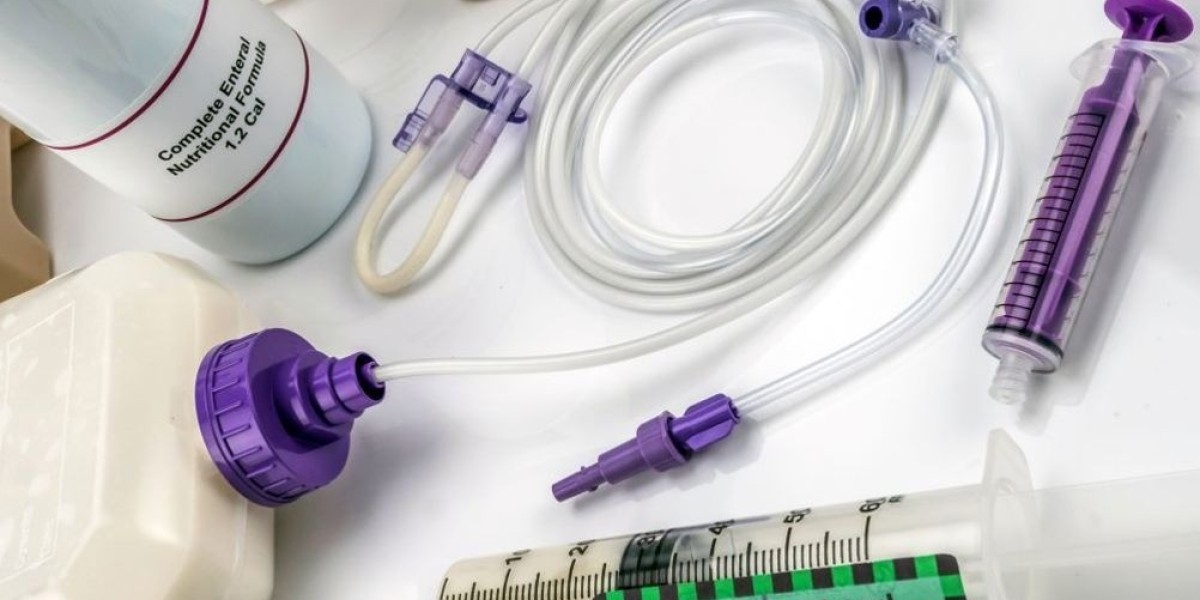Caring for someone who requires nutritional support through a feeding tube can be a challenging journey, both emotionally and physically. Families often wonder how long tube feeding is necessary and what factors influence its duration. Understanding these aspects is crucial for planning, managing expectations, and ensuring the patient’s well-being. Tube Feeding at home in Dubai provides a convenient and supportive option for patients who cannot consume food orally, allowing them to receive essential nutrients in the comfort of their own home.
Understanding Tube Feeding
Tube feeding, or enteral nutrition, involves delivering a liquid diet directly into the stomach or small intestine through a tube. This method ensures that patients who are unable to eat or swallow safely still receive the nutrients their bodies need. Tube feeding can be temporary or long-term depending on the patient’s medical condition.
Several types of feeding tubes exist, including nasogastric (NG) tubes for short-term use and gastrostomy (G-tube) or jejunostomy (J-tube) tubes for longer-term needs. Each type has specific care requirements and impacts the overall duration of tube feeding.
Factors Affecting the Duration of Tube Feeding
The length of time tube feeding is required varies greatly from patient to patient. Some factors influencing this include:
Underlying Medical Condition: Patients recovering from surgery or an acute illness may need tube feeding for a few weeks, while those with chronic conditions may require it for months or even years.
Swallowing Ability: Recovery of safe swallowing function can reduce dependence on tube feeding. Speech and swallowing therapy often plays a crucial role here.
Nutritional Needs: Patients with higher nutritional demands or those unable to meet their caloric requirements orally may need prolonged support.
Overall Health: Age, immunity, and the presence of other medical conditions can affect how quickly a patient can transition back to oral feeding.
It’s important to note that the decision to continue or discontinue tube feeding is made carefully, often involving assessments by healthcare professionals, nutritionists, and family members.
The Role of Home Tube Feeding in Dubai
Providing tube feeding at home has become increasingly common due to the comfort, privacy, and personalized care it offers. Home care allows patients to remain in a familiar environment, reducing stress and enhancing recovery. Families receive training on how to administer feeds safely, recognize potential complications, and maintain hygiene standards.
Home tube feeding in Dubai also includes monitoring by healthcare providers, ensuring the patient receives the correct formula, feeding schedule, and adjustments based on their progress. This approach ensures continuity of care while empowering families to actively participate in the patient’s nutrition management.
Signs That Tube Feeding Duration May Change
Monitoring the patient’s condition is essential to determine if tube feeding can be reduced or stopped. Key indicators include:
Improved swallowing reflex and oral intake
Stable weight and adequate nutrient absorption
Decreased risk of aspiration or choking
Overall improvement in health status and energy levels
Frequent consultations and regular assessments help families and caregivers make informed decisions about the duration of tube feeding, ensuring the transition to oral feeding is safe and sustainable.
Benefits of Timely Transition
Gradually reducing tube feeding, when appropriate, has several advantages. It can enhance the patient’s quality of life by restoring the pleasure of eating, promoting social interaction during meals, and supporting normal digestive function. Moreover, a well-managed transition minimizes complications such as tube blockages, infections, or gastrointestinal discomfort.
Challenges of Long-Term Tube Feeding
While tube feeding is life-saving, long-term dependence can pose challenges. Patients may experience emotional stress due to limited oral intake, skin irritation at the tube site, or gastrointestinal discomfort. Families must be prepared for meticulous care routines, monitoring for signs of infection, and adjusting feeding schedules to match the patient’s needs. Support from trained home care professionals ensures these challenges are effectively managed.
Tips for Managing Tube Feeding at Home
Successful tube feeding at home requires careful planning and adherence to guidelines. Key tips include:
Keeping the feeding equipment clean and sterilized
Following the prescribed feeding schedule and formula
Monitoring for signs of complications such as nausea, diarrhea, or tube displacement
Maintaining regular communication with healthcare providers
Educating all caregivers on proper techniques and emergency measures
With these practices, tube feeding becomes a safe and manageable part of daily life, providing the necessary nutrition while allowing the patient to remain at home.
Conclusion
The duration of tube feeding varies depending on the patient’s condition, recovery progress, and nutritional needs. While some may require it temporarily, others may depend on it for the long term. Choosing home care options in Dubai offers the comfort, professional support, and flexibility needed to manage this essential therapy effectively. Families can feel confident knowing that proper guidance and monitoring are available, making the experience smoother for both patients and caregivers. Tube Feeding at home Dubai ensures that patients receive essential nutrition while maintaining a high quality of life in their own surroundings.






